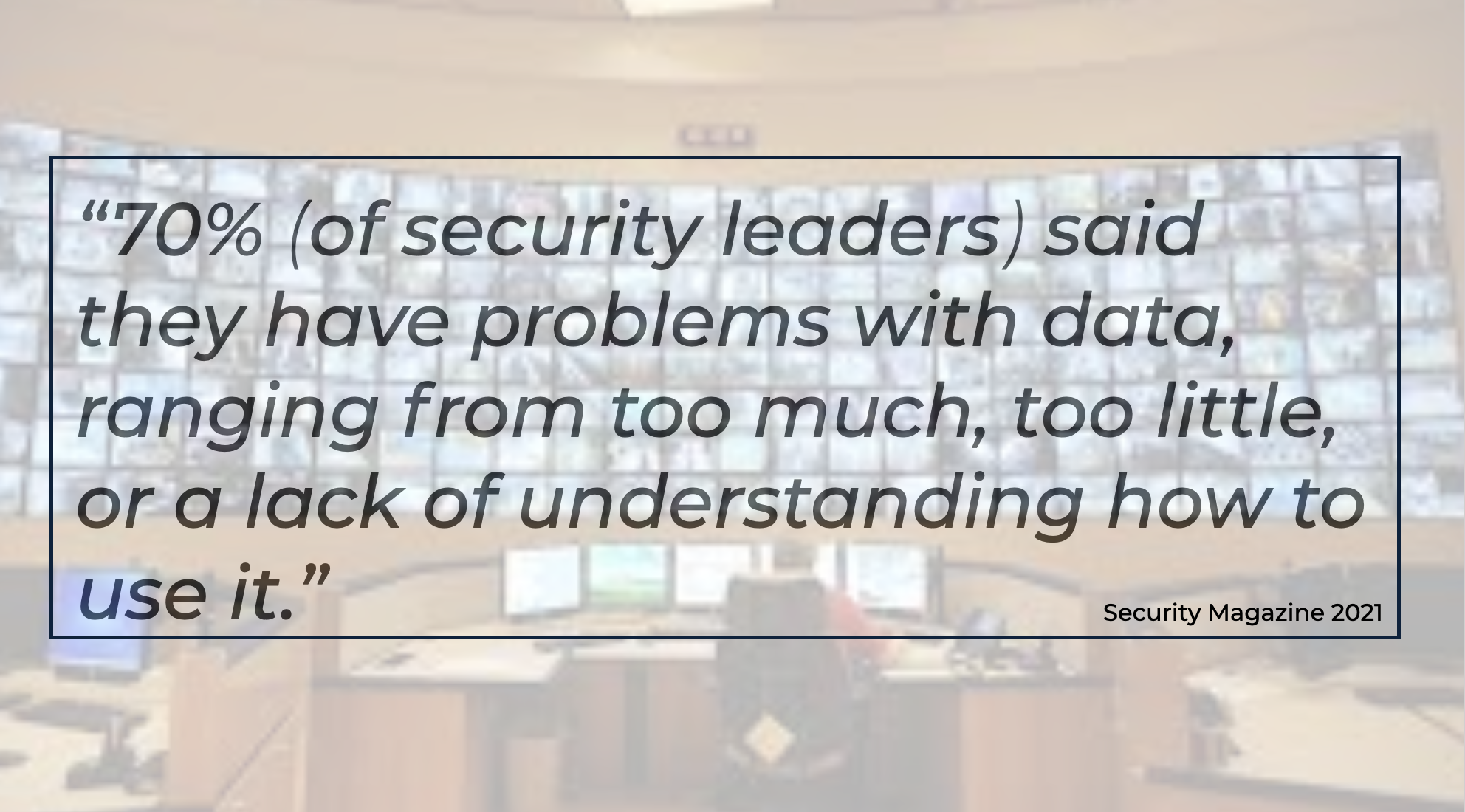Situational Awareness is the goal for security and Smart Cities. How we get Situational Awareness is less obvious, but it is achievable. Security Magazine published an article recently “Enterprises says physical security made more important since COVID-19”, part of the 2021 Smart Security Trends Report from Brivo. The article was about the trend for increased security, in fact an expectation of 2-3 times growth in 2022. But for me the key was this: “Many security leaders also admitted a pain point of leveraging data for physical security — 70% said they have problems with data, ranging from too much, too little, or a lack of understanding how to use it.”
70% of Security Leaders Can’t Leverage the Data
Almost ¾ of security leaders have problems with the data! This pain is real and it’s important. The point of the data is to make people safe and secure. If the vast majority of security leaders are feeling this pain, it underscores that most current security installations are falling short of their objective.
If we unpack this in alignment with the responses of these leaders: too little, too much & a lack of understanding, it’s clear that all of these relate to the cognitive burden. This is not a new idea. Long before the tech revolution Simon (1971) wrote: “Information consumes the attention of those receiving it . . . a wealth of information creates a poverty of attention”
Not Enough Security Data
‘(T)oo little’. What was your first thought? That the security infrastructure is inadequate? Like trying to triangulate a location with only two reference points? There’s more to it. Struggling to understand from what little information is available to see, i.e. covered by cameras or other sensors, without sufficient context is often impossible. The first element of Situational Awareness dictates that we perceive what’s going on. If we don’t have enough information, we just can’t understand, we can’t take the second step to comprehension. The other aspect of ‘too little’, cognitive underload, is also relevant and is something a security leader can effect without delay.
Cognitive Underload
Research reveals that ‘underload’, that is, not enough security data, can result in distraction. Experienced Airbus A320 pilots have overshot their destination whilst using their personal computers (Rutkowski 2016). Cognitive overload has been seen in anaesthesiologists where the standard of care dictates use of sophisticated technology: the doctors are distracted and engage in other activities due to ‘underload’. Guards looking at phones or reading due to boredom have had serious consequences. Creating a ‘demanding enough’ environment for the guard should be a consideration for every security leader.
Too Much Security Data & Cognitive Overload
‘Too much’ reflects the reality of being overwhelmed with security data, again blocking situational awareness. Perhaps it’s a lack of spatial context. Or not being able to follow the action when it moves out of the frame of the screen. Or there’s action or activity on multiple screens and it’s impossible to know where to look. After all, screens are not necessarily adjacent in the display in the way that the spaces relate to each other in real life. Part of this problem is likely cognitive overload. There is simply more information to ‘process’ than there is processing capacity in the person working the problem.
Not Understanding the Security Data
A ‘lack of understanding’ indicates that an event is being observed but once again understanding is out of reach. How does that happen? What’s the gap? Each of us can come up with multiple scenarios. And each of those would likely point to specific minor or contributing issues but really, they are all variations on a theme. The central theme though doesn’t change. It all results in a complete lack of situational awareness.
In each of these cases: too much, too little and a lack of understanding there will undoubtedly be contributing factors. Sometimes an area is not covered by a fixed camera. maybe the operator is new and inexperienced. Maybe time was lost trying to slew a PTZ camera to see a certain area. Perhaps there was an alert from video analytics and after the initial alert the operator was scanning trying to find where the events continued out of range of the initial camera. Security leaders encounter these and other scenarios every day.
But the situation is not hopeless. Most sites have at least a partial basis for a good system. What is often lacking is the way to pull it all together into an understandable picture. And even more importantly, to put it in the hands of those that need it.
Learn more about how Liquid360 enables full situational awareness for even the most complex sites. Watch this video for security professionals.

